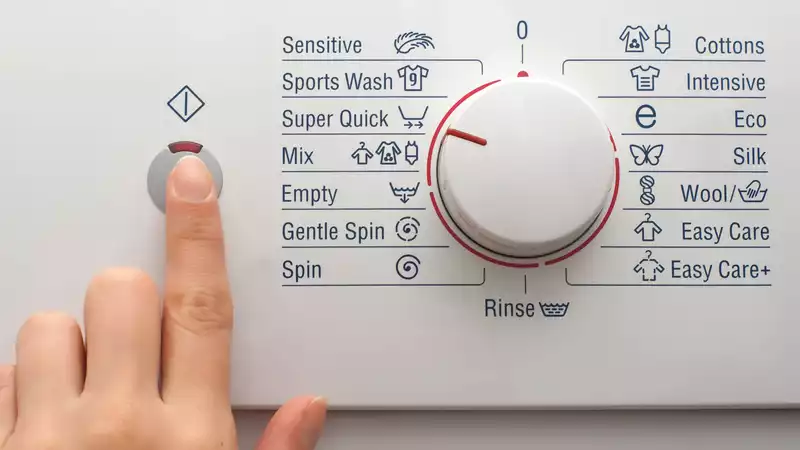With so much laundry to do and so little time to do it, many people resort to the quick wash setting on their washing machines. After all, it takes half the time of regular laundry and can do twice as much!
In fact, the Quick Wash setting is so popular that some washing machines are even designed around it. But what are the benefits of using the Quick Wash setting?
Using the Quick Wash setting may seem like an ideal solution, but it can result in laundry that is not washed properly. This section explains when the fast wash setting should be used and when it should not.
As the name implies, this is a short wash! Depending on the washer, this usually takes from 15 minutes to an hour. It consumes less water and energy than a standard wash cycle and has a shorter spin cycle time. Some allow temperature settings, but generally cannot be washed at temperatures higher than 40°C (104°F). Also, quick wash settings are not designed to wash an entire load of laundry.
If you are unsure whether a garment is suitable for the quick wash cycle, refer to the care label and wash symbol. In general, if it is suitable for regular washing, it should also be suitable for the quick wash cycle, but if you are unsure, use the delicate cycle or hand wash.
1. Best for when you are in a hurry. The quick wash cycle can be twice as fast as the standard cycle and is ideal if you need an emergency shirt or blouse for a night out. Some cycles take as little as 15 minutes to finish washing!
2. Suitable for when you want to freshen up your laundry or deal with a light stain. Quick washes are naturally not as thorough as full cycles. However, it is still a good option if you just want to freshen up your laundry or if you are not dealing with heavy soiling.
3. If you are only washing one or two garments, it is ideal. The quick wash setting is designed to handle small amounts of laundry, usually 2-4 pounds (or 1-2 kg). Therefore, if only one garment needs to be rinsed, this setting is appropriate.
4. Energy and money savings. The Quick Wash setting consumes less energy than the regular cycle. If incorporated into the laundry routine, it can save a significant amount of money on energy bills over time.
5. extend the life of your washing machine. Since the Quick Wash setting is shorter than the standard wash cycle, the washing machine is used for less time. This naturally extends the life of the washing machine.
6. less damage is done to the clothes overall. This depends on the strength of the spin cycle, but generally speaking, the quick wash setting is so fast that it is gentler on clothes in terms of wear and tear from washing.
1. It is not suitable for stubborn stains or smelly laundry. If you are washing baby clothes or want to sanitize bed sheets, you should not use this cycle. The quick wash setting generally does not kill germs and viruses because it cannot wash at temperatures above 40°C (104°F). It also does not wash thoroughly and will not remove persistent stains.
2. Cannot wash a full load. The quick wash setting requires less water and time, so the capacity is much smaller than a standard cycle. Therefore, it cannot be used for weekly washing. If too much water is added, the laundry will be even less clean.
3. Spinning can be slow. Even on the quick wash setting, thicker garments will hold more water than usual because they do not spin as long. Therefore, heavier garments will hold more water than they are accustomed to. [Soap residue can remain on the clothes as well as in the washer. With the quick wash setting, rinsing is not efficient and may leave detergent residue on the clothes and the machine after the cycle is complete. This is not ideal for those who suffer from sensitive skin and is not good for the washing machine. For this reason, try to reduce the amount of detergent used in this setting.










Comments